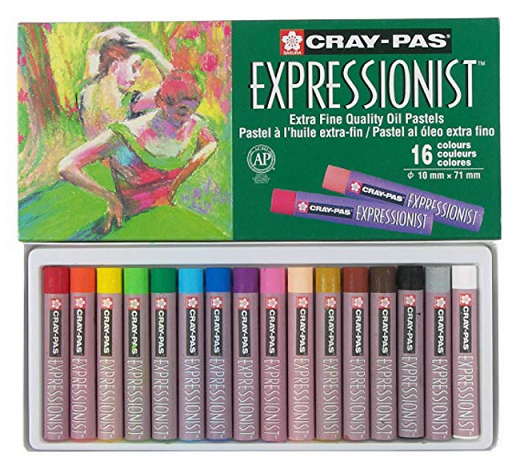Cold wax and oil painting is all about experimentation with creating texture, shape, color and many techniques. To overcome procrastination, fear, doubt and lack of confidence, it is helpful to learn how to play. As a beginner, you should not worry about knowing every technique and every tool. Just be yourself and play along. If you get stuck, try out new methods like masking, layering, stencils so you see the possibilities are endless. If you want to create highly engaging pieces you need to begin with a firm foundation in color and design. In this post about cold wax painting for beginners, we will discuss markmaking, how to mix colors, mix paints, supplies, how to set up your studio, best safety practices and how to get started.

Cold wax and oil painting techniques
When cold wax and oil paint hit the canvas, you create marks, shapes and texture. It may sound like a complicated process, but it’s not. Technique can be first done by playing and experimenting with an open and flexible attitude. You can be creating your artwork with loose gestures, masking, stencils, monoprint, mark making and using pigment sticks. Abstraction, semi-abstraction, semi-realism and realism can all be achieved using cold wax and oil technique. Artists may use cold wax and oil paint to create texture, layers, shapes, patterns, lines, marks and develop a composition that is pleasing while considering color and design foundations.
Different types of mark making mediums
Repeated marks can create a pattern that is often practiced by oil and cold wax artists. To add expression to your artwork, you may want to experiment with different types of mediums. You can use dry mediums as a part of your cold wax and oil painting supplies like charcoal, chalks, graphite, oil pastels, pigment sticks and wax crayons. Combining an array of mediums enables you to truly find the best one that matches your expression.
Beginner tips and techniques for cold wax and oil painting artists
Before you begin learning about different cold wax oil painting techniques, it is important learn the basics of color and design foundations. This will enhance your confidence so you can better at express your emotions in the painting process. There is such a wide variety of painting techniques which apply to abstraction through realism; all genres can be expressed in this medium.
Artist mindset to prevent procrastination, doubt and fear and problem solve so you can finish your paintings:
- Don’t think, Just DO: Begin with a playful attitude without worrying about the final result. Painting is a process and some of your most exciting discoveries happen during the process of play. Anything goes; you cannot make mistakes, just keep trying new things without worrying about the final product.
- Contrast and Differences: Use simple prompts to help you play. Think about contrasts like light and dark, curvilinear, and rectilinear, warm and cool, messy and highly rendered, etc.
- Getting Unstuck so you can move forward: Rely on your artist mindset and explore your creativeproblem solving skills when you are stuck. Ask, “What don’t I have?” and add that. If you look at your painting and think it’s ugly, add the opposite and think about what you love. Incorporate the shapes, colors, textures and lines you love that you have seen throughout your life.
- To finish your paintings: Apply the fundamentals of color and design to help you apply finesse and subtlety and examine your compositions regarding balance, contrast, unity, harmony, repetition, dominance and areas of focus.
Bottom line
Creating powerful, personal, authentic work in the cold wax and oil medium will be greatly enhanced if you begin with play, explore with intention and finish with subtlety and finesse. To know more about the experimental approaches of Cold Wax Painting Supplies, visit the link given below.





Comments